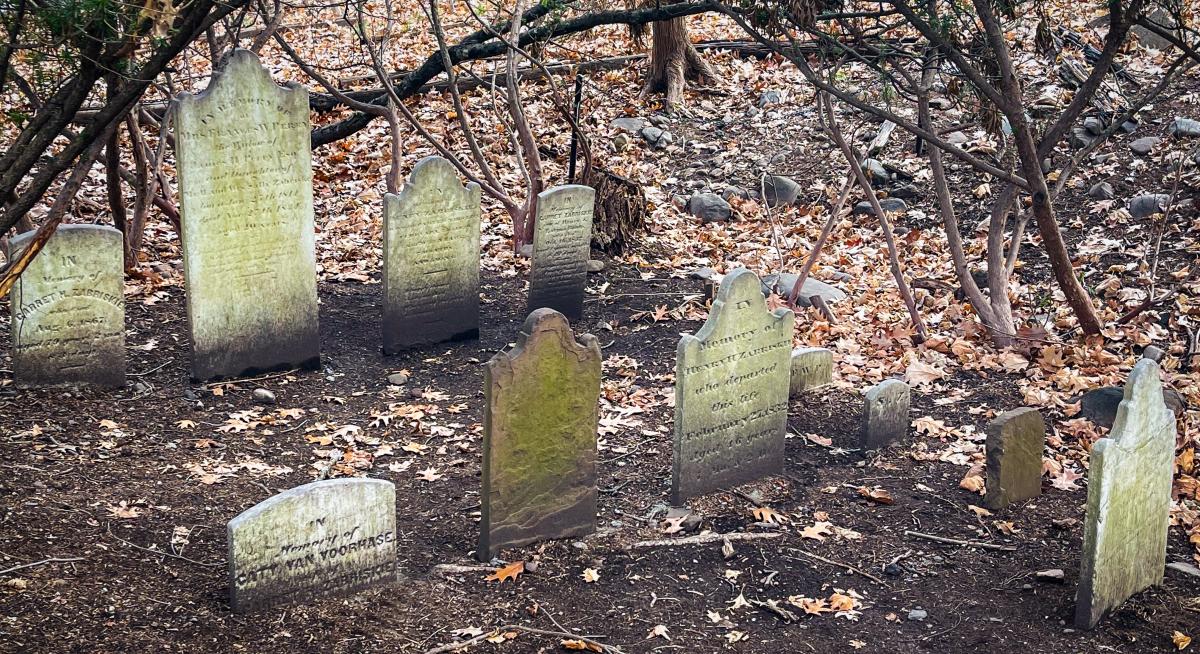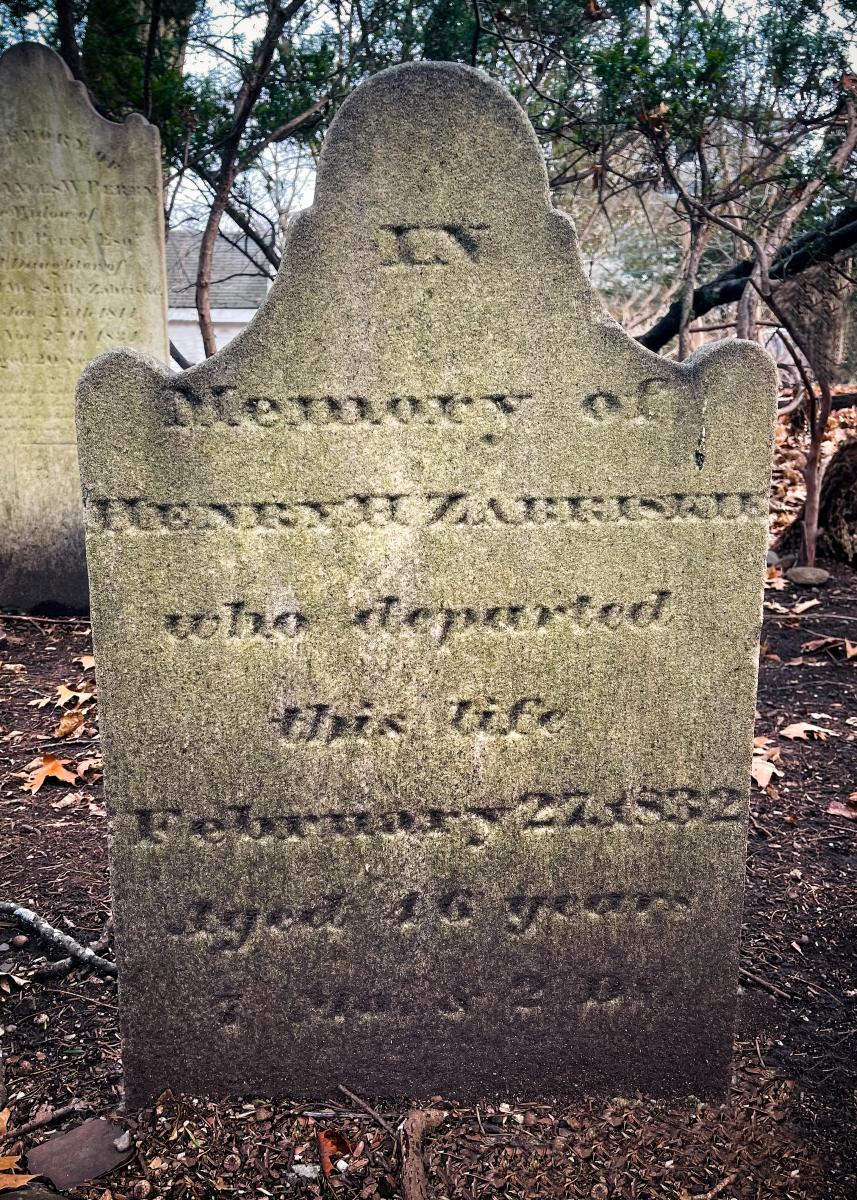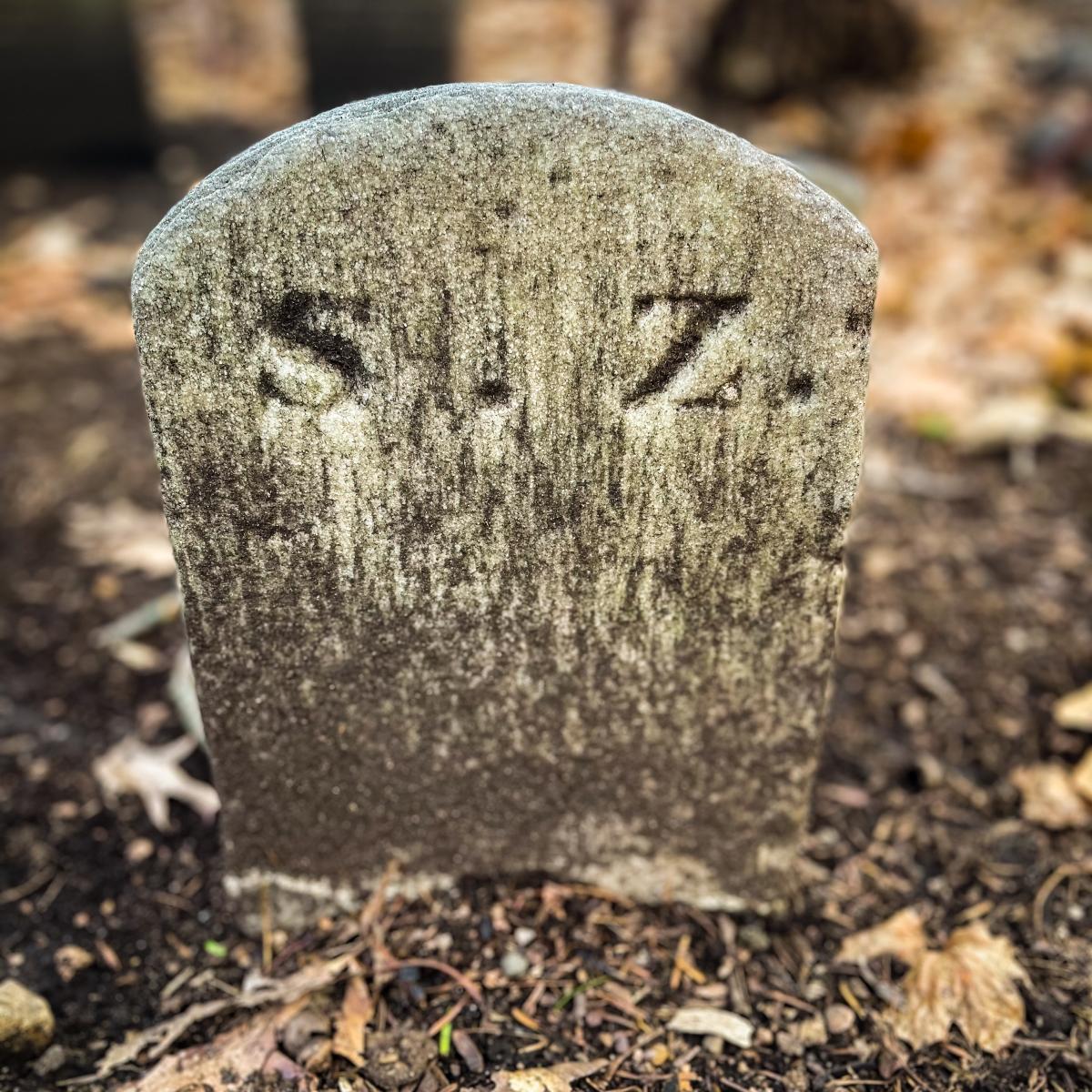The Hopper-Zabriskie Family Cemetery
The Hopper-Zabriskie Family Cemetery
The Hopper-Zabriskie Cemetery, historically known as the “Old Burying Ground” is located on a small knoll just below Upper First Street near the Ho-Ho-Kus train station.
 (Photo Credit: Mike Reade/Ryan Cecala)
(Photo Credit: Mike Reade/Ryan Cecala)
It is a family cemetery started before 1792 on land originally owned by Abraham Hopper. The Hopper family was the first to settle Ho-Ho-Kus, then known as Hoppertown. Many Dutch families also settled the area including the Zabriskie, Ackerman, Blauvelt, Bamper, Banta, and Terhune families. Most were members of the Old Paramus Reformed Church nearby. While family members were commonly interred in the church graveyard, some chose to bury family members in small local plots closer to their residences. Such was the case with the Ackermans who had a plot on the northeast side of town near the Saddle River, and the Hopper and Zabskie families who were buried in the small plot in Hoppertown near the Ho-Ho-Kus brook.
The Hopper’s owned homesteads in the center of town on both sides of the brook and operated a grist mill. During the American Revolution, they were committed to the patriot cause and served with the Bergen County Militia. The British made several raids into Hoppertown during the war while foraging for military stores, farm animals, and other goods. One notable siege took place at Hoppertown on April 16, 1780. John J. Hopper was seriously wounded. His home and those of his brothers were burned down. The grist mill on the brook was also destroyed. The Zabriskie family would later acquire and occupy the original Hopper residence which was placed under siege. The building is now known as the Ho-Ho-Kus Inn & Tavern. Materials from John Hopper’s original house razed during the raid are believed to be incorporated into the foundation of the inn.
Around 1830, John J. Zabriskie took up residence in the former Hopper home, which became known as the Mansion House. The Zabriskie’s owned several farms and buildings nearby and built a dam and mill on the brook. The Zabriskie family also acquired the Hopper family cemetery on the hillside adjacent to the mill. When the first Zabriskie mill dam breached in 1862, John Jacob would build a much grander dam out of brownstone blocks to create Sylvan Lake while at the same time expanding cotton mill operations.
There were a number of descendants from the Hopper and Zabriskie families who were interred in the small cemetery between 1792 and 1867. In 1910, an archivist named John Neafie from New York City cataloged the names on the headstones and provided a copy to the Bergen County Historical Society. Some of those appearing in this catalog included:
- Garret Hopper, died Feb.17, 1792, age 69 years
- Elsey Hopper, wife of Garret Hopper, died March 8, 1816, age 89 years
- Mary Zabriskie, wife of Henry Zabriskie, died June 3, 1821, age 69 years
- Francis W. Perry, wife of James H. Perry Esq. and daughter of H. and Sally Zabriskie, born June 25, 1814, died Nov. 27, 1834
- Henry Zabriskie, died Feb.23, 1839, 22 years
- Henry H. Zabriskie, died Feb. 27,1832, age 46 years
- Sally Zabriskie, wife of H.H. Zabriskie, died May 11, 1829, age 41 years
- Garret H. Zabriskie, died Aug. 6, 1867, age 79 years
- Caty Van Voorhase, wife of Garret H. Zabriskie, died Nov. 6, 1833, age 41 years
- Garret Zabriskie, son of Henry and Lavinia Banta, died Oct. 16, 1832, age 4 years
- Ann Bamper, wife of Jacob Bamper, died Feb. 26, 1844, age 90 years
- C.I.Z. (probably refers to Casparis, son of Mary Zabriskie)
 (Photo Credit: Mike Reade/Ryan Cecala)
(Photo Credit: Mike Reade/Ryan Cecala)
Only a handful of legible headstones remain, though many of the inscriptions have been significantly eroded away. At least four Hopper headstones and others which appeared in Neafie’s inventory have gone missing.
The cemetery has been rehabilitated in order to preserve its historical significance and is currently the responsibility of the Borough of Ho-Ho-Kus.
 (Photo Credit: Mike Reade/Ryan Cecala)
(Photo Credit: Mike Reade/Ryan Cecala)

